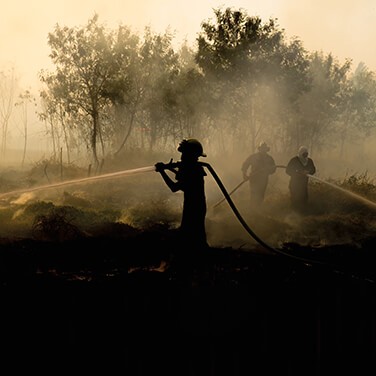Air Pollution Intensifies Amid Wildfires
By Christina Phillis
Air quality in the Northwestern United States is worse now than it was 30 years ago, according to researchers from the University of Washington in Bothell. In a new report, they explain that wildfires, which have become more frequent in that region since the mid-1980s, are the culprits.
Wildfires to Blame
Wildfires are known for the outright death and destruction they can cause in just a few hours. Another less immediate effect is a decline in air quality, which occurs when the smoke and ash from wildfires fills the sky. Researchers focused on this latter aspect of wildfires and the fine particulate matter produced as a result. These particulates, typically with diameters of less than 2.5µm, can aggravate breathing problems and pose a risk to children, the elderly and people with asthma.
The team of authors examined data from more than 100 rural monitoring sites around the country and calculated the daily amounts of fine particulate matter in the air. The report revealed a positive trend in particulate matter stretching from California to Montana from 1988 to 2016, while declining trends were seen in the rest of the country during that same period.
To help determine the causes of the increased air pollution in this region, researchers analyzed both sulfate and particulate carbon levels. Sulfate is a byproduct of burning fossil fuels, while particulate carbon is the result of fire emissions. Their results showed that sulfate in the Northwest did not increase over time, but particulate carbon levels did, so wildfires are more likely to blame for the poor air quality.
Additionally, they discovered that wildfires do not negatively impact air pollution on an average day in the Northwest. It’s only on the “bad days,” which typically occur during peak wildfire season, that air quality is getting worse over time. Every year during the study period, levels of fine particulates on the days with the worst air quality have increased at an average rate of 0.21µg per cubic meter.
Measuring the wide-scale impact of wildfires is not easy. The fires are sporadic and occur in a variety of different places over time. Atmospheric scientist and study coauthor Daniel Jaffe, PhD, further explained the challenge, saying, “Most of the year, wildfires aren’t impacting air quality.”
The Aftermath
Although the fires typically occur over a matter of days or weeks, the health effects can be long lasting. Chronic health conditions, such as heart disease and diabetes, have been linked to regular exposure to fine particulate matter. And extensive exposure to the smoke from active wildfires can be dangerous for the general population.
Regulations have been effective in curbing the amount of human-caused pollution and fossil-fuel emissions, but wildfires are different. Although often the result of human carelessness, fire risk and spread can be increased by high winds, heat and other weather conditions caused by climate change. The ongoing challenge of dealing with natural disasters is being exacerbated by climate change — a factor that is unfortunately here to stay.
